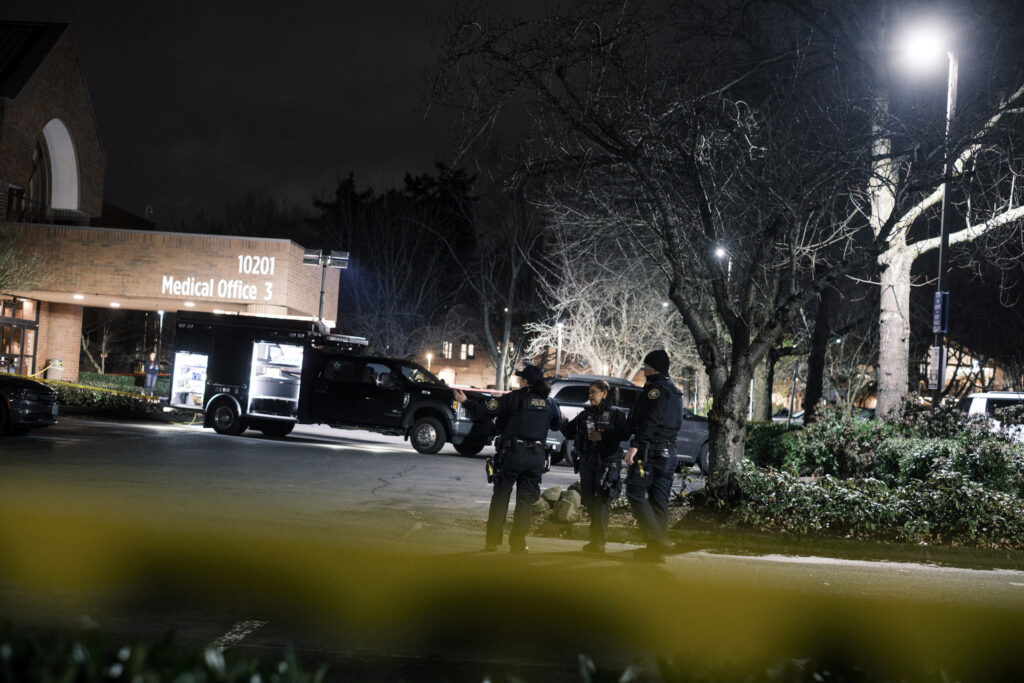U.S. economy shows resilience with 3% growth in Q2, driven by consumer spending and business investment. (AP/Nam Y. Huh)

- Consumer spending rose 2.9% annually, while business investment expanded 7.5%, led by equipment investment.
- Inflation continues to ease, with PCE index at 2.5% and core PCE at 2.7%, approaching Fed's 2% target.
- Fed poised to cut interest rates in September, aiming for a "soft landing" to support job market and curb inflation.
Share
|
Getting your Trinity Audio player ready...
|
WASHINGTON — The U.S. economy grew last quarter at a healthy 3% annual pace, fueled by strong consumer spending and business investment, the government said Thursday in an upgrade of its initial assessment.
The Commerce Department had previously estimated that the nation’s gross domestic product — the total output of goods and services — expanded at a 2.8% rate from April through June.
Sharp Acceleration from First Quarter
The second-quarter growth marked a sharp acceleration from a sluggish 1.4% growth rate in the first three months of 2024.
Consumer spending, which accounts for about 70% of U.S. economic activity, rose at a 2.9% annual rate last quarter. That was up from 2.3% in the government’s initial estimate. Business investment expanded at a 7.5% rate, led by a 10.8% jump in investment in equipment.
Thursday’s report reflected an economy that remains resilient despite the pressure of continued high interest rates. The state of the economy is weighing heavily on voters ahead of the November presidential election. Many Americans remain exasperated by high prices even though inflation has plummeted since peaking at a four-decade high in mid-2022.
Related Story: Why Economists Worry About Trumpflation
But measures of consumers’ spirits by the Conference Board and the University of Michigan have shown a recent uptick in confidence in the economy.
Inflation Continues to Ease
“The GDP revisions show the U.S. economy was in good shape in mid-2024,” said Bill Adams, chief economist at Comerica Bank. “Solid growth of consumer spending propelled the economy forward in the second quarter, and the increase of consumer confidence in July suggests it will propel growth in the second half of the year as well.”
The latest GDP estimate for the April-June quarter included figures that showed that inflation continues to ease while remaining just above the Federal Reserve’s 2% target. The central bank’s favored inflation gauge — the personal consumption expenditures index, or PCE — rose at a 2.5% annual rate last quarter, down from 3.4% in the first quarter of the year. And excluding volatile food and energy prices, so-called core PCE inflation grew at a 2.7% pace, down from 3.2% from January through March.
Both the PCE inflation numbers issued Thursday marked a slight improvement on the government’s first estimate.
A GDP category that measures the economy’s underlying strength rose at a healthy 2.9% annual rate, up from 2.6% in the first quarter. This category includes consumer spending and private investment but excludes volatile items such as exports, inventories and government spending.
Related Story: Harris Aligns with Biden on Raising Taxes for the Wealthy. Will It Help or Hurt ...
Fed’s Interest Rate Strategy
To fight spiking prices, the Fed raised its benchmark interest rate 11 times in 2022 and 2023, lifting it to a 23-year high and helping shrink annual inflation from a peak of 9.1% to 2.9% as of last month. The much higher borrowing costs for consumers and businesses that resulted had been widely expected to cause a recession. Yet the economy has kept growing and employers have kept hiring.
Now, with inflation hovering only slightly above the Fed’s 2% target level and likely slowing further, Chair Jerome Powell has essentially declared victory over inflation. As a result, the Fed is poised to start cutting its benchmark interest rate when it next meets in mid-September.
A sustained period of lower Fed rates would be intended to achieve a “soft landing,” whereby the central bank manages to curb inflation, maintain a healthy job market and avoid triggering a recession. Lower rates for auto loans, mortgages and other forms of consumer borrowing would likely follow.
Related Story: Government: US Economy Added 818,000 Fewer Jobs Than First Reported in Year ...
The central bank has recently become more concerned about supporting the job market, which has been gradually weakening, than about continuing to fight inflation. The unemployment rate has risen for four straight months, to 4.3%, still low by historical standards. Job openings and the pace of hiring have also dropped, though they remain at relatively solid levels.
Thursday’s report was the Commerce Department’s second estimate of GDP growth in the April-June quarter. It will issue its final estimate late next month.
RELATED TOPICS:
Categories

Google Guys Say Bye to California


















